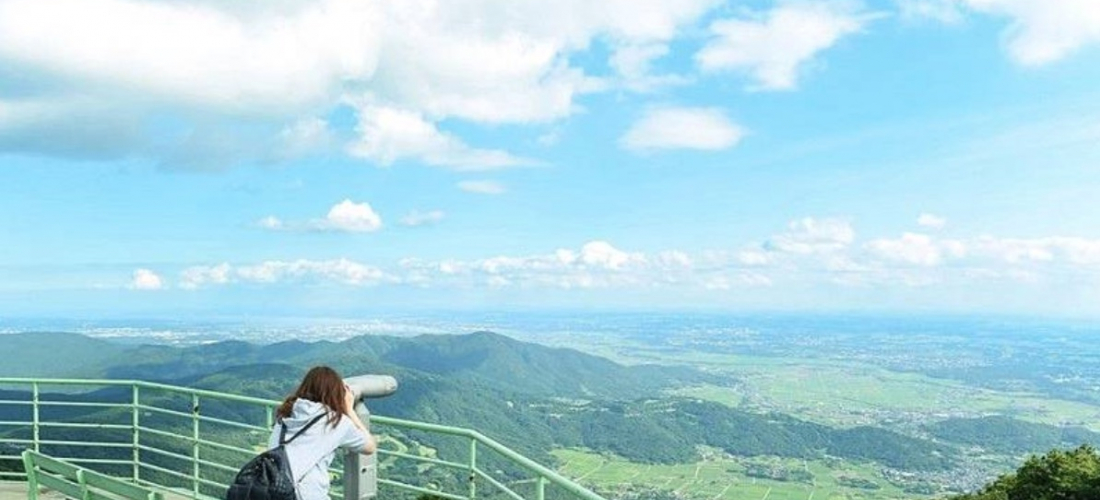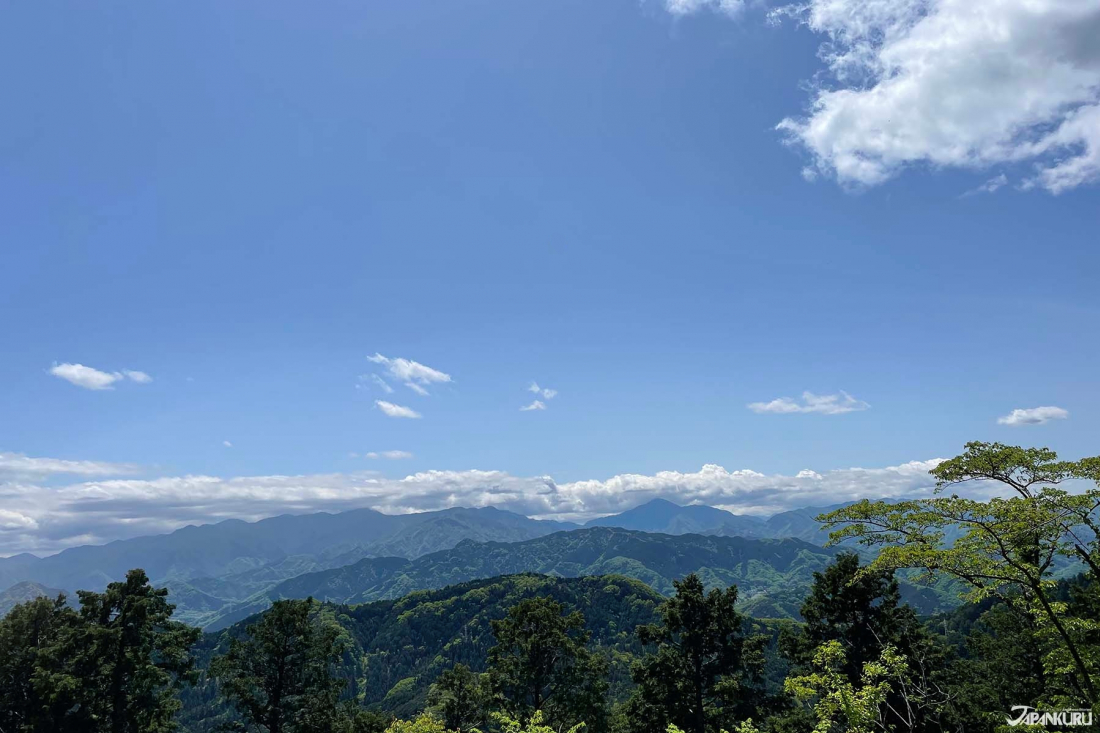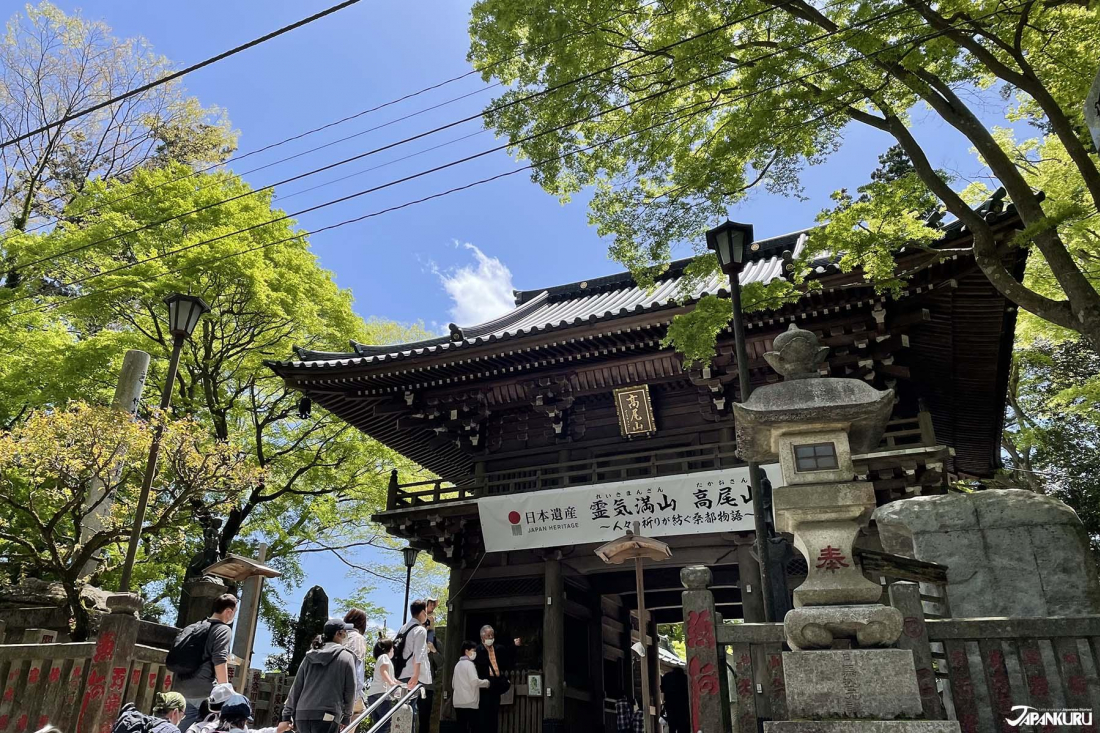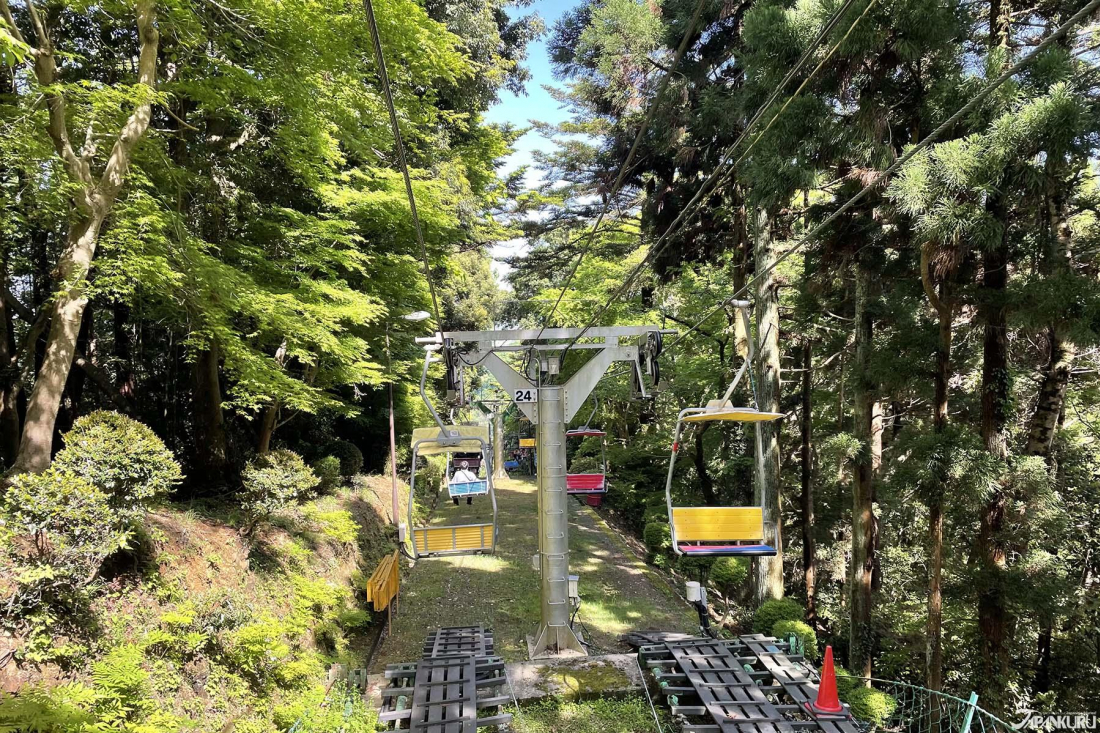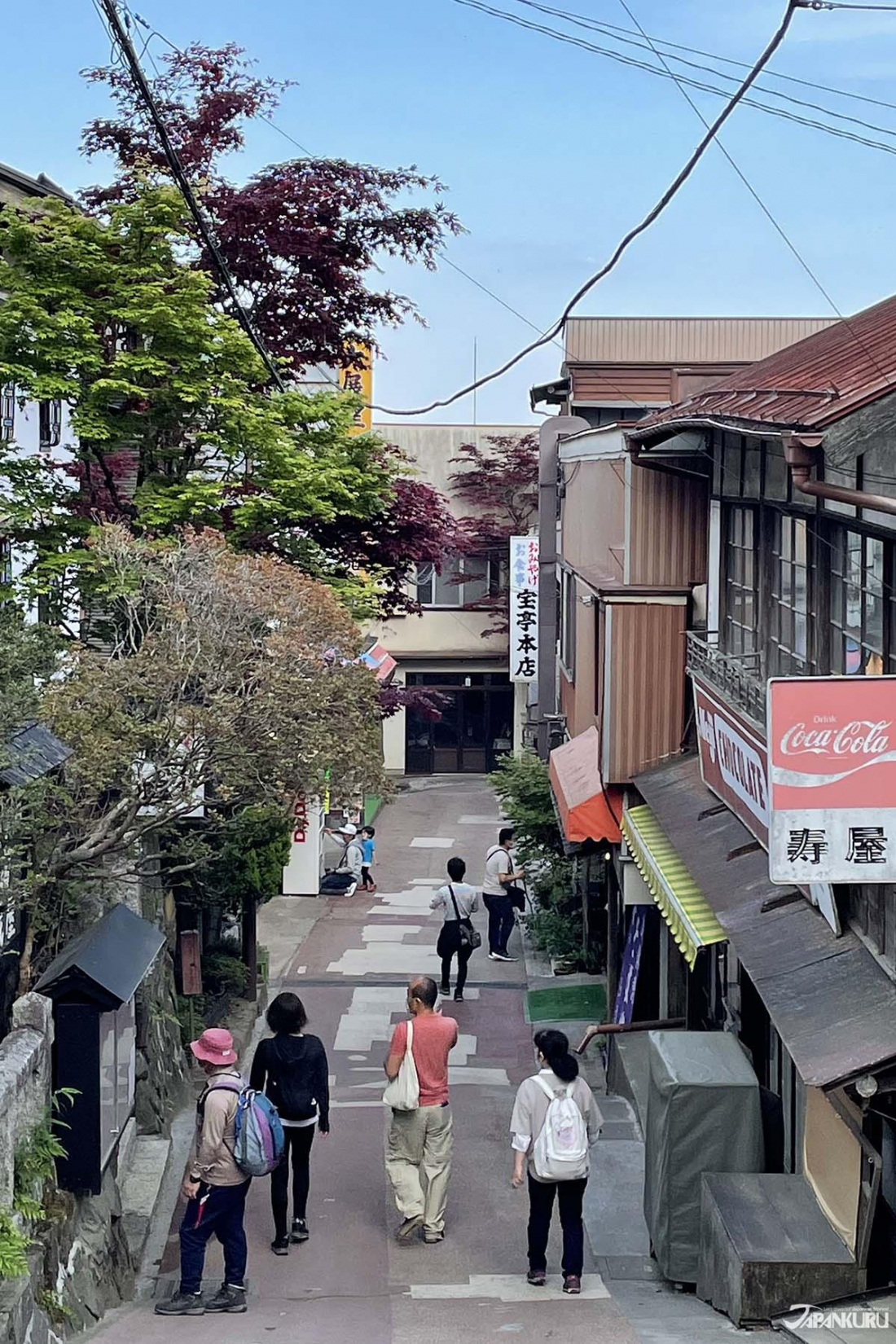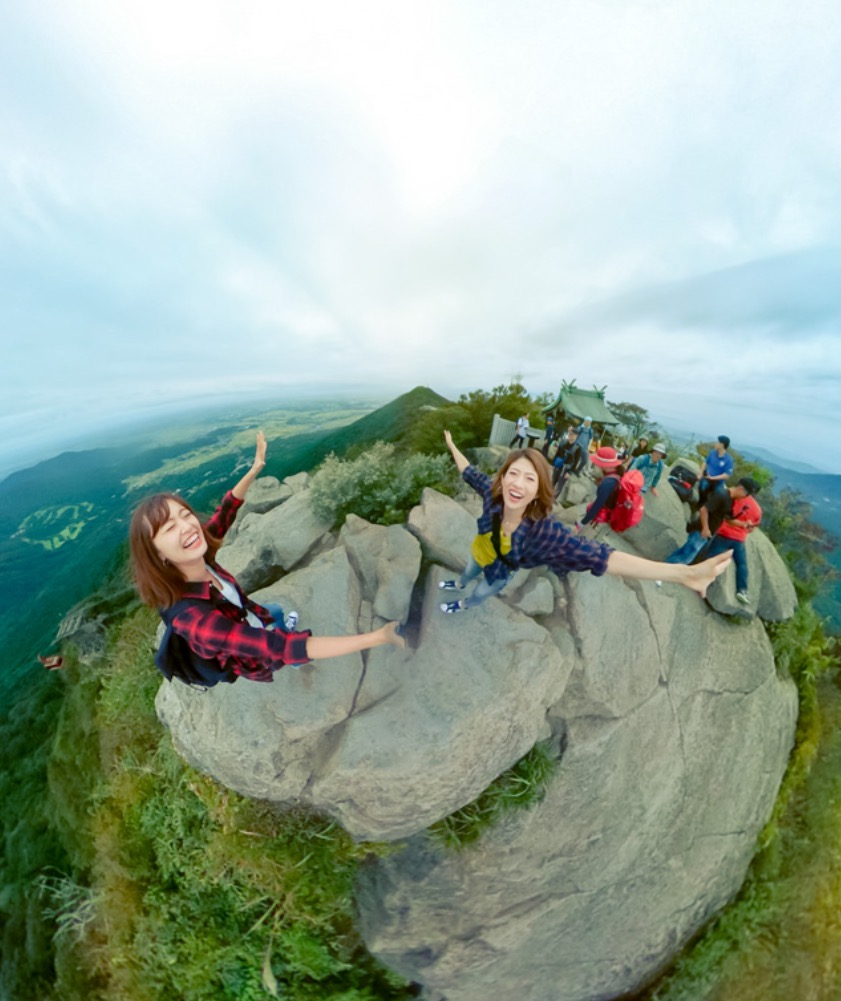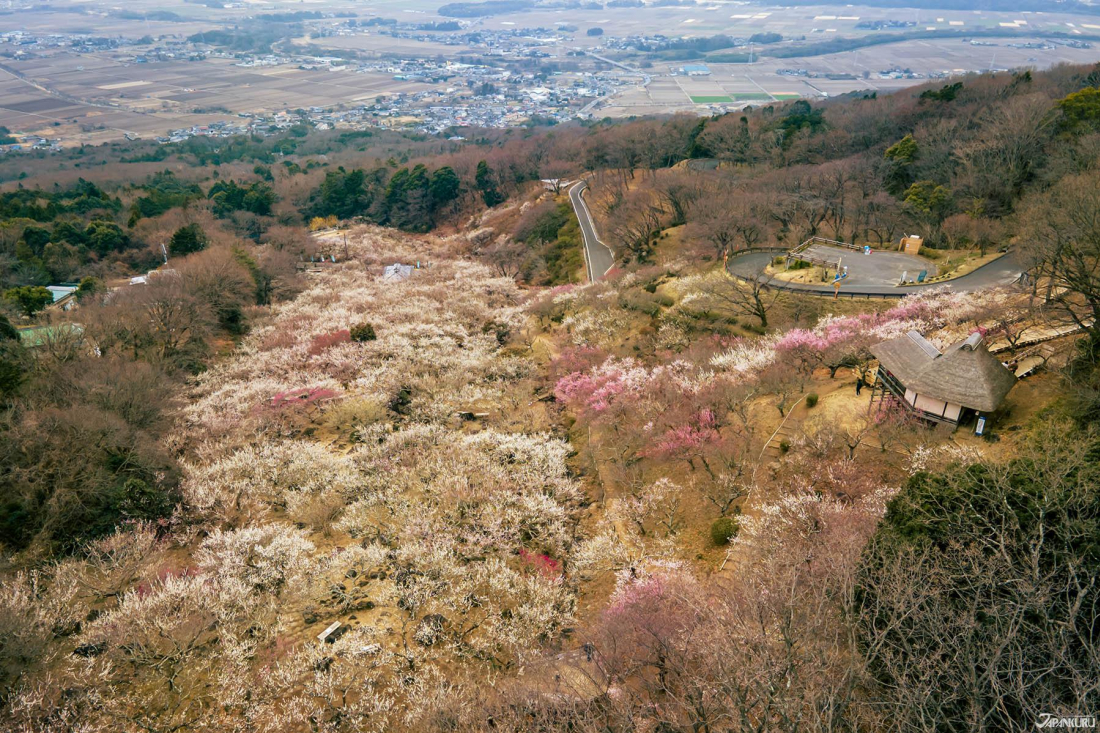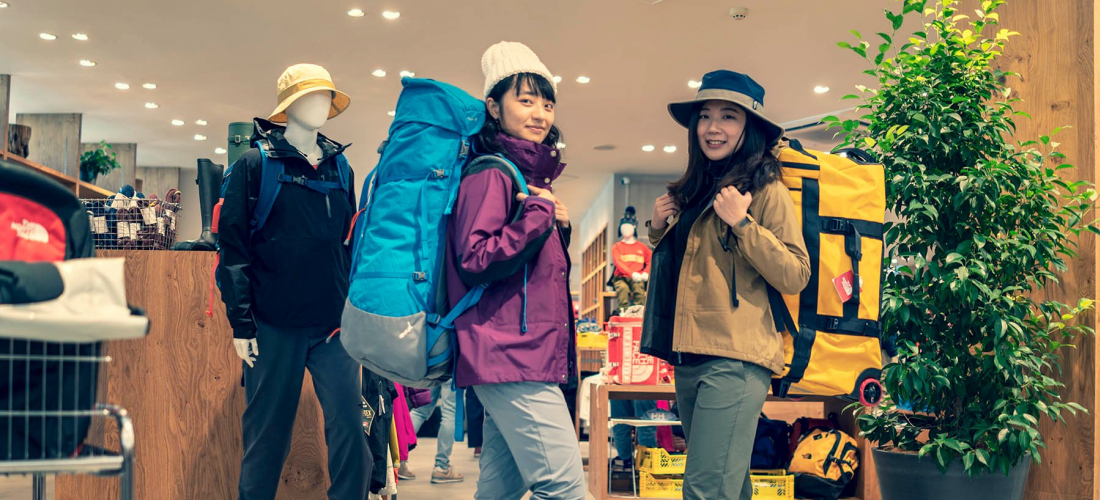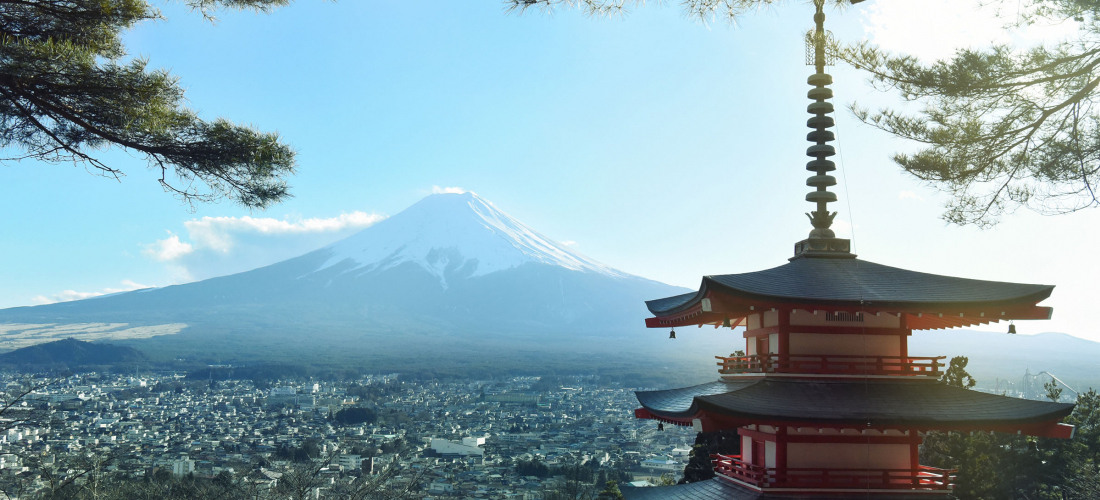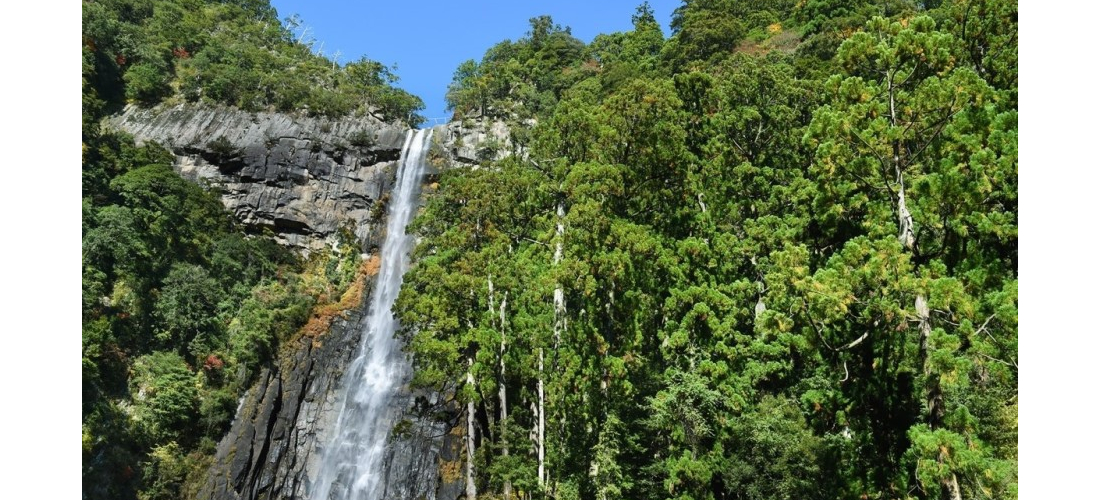CONTENTS
Hiking, mountain climbing, and nature walks in Tokyo? It’s easier to find than you might think!
The hustle and bustle of Tokyo attracts millions of tourists every year, but for many, there's nothing more refreshing and relaxing than a little break from the crowds and a breath of fresh mountain air! For travelers and Tokyoites alike, hiking on the outskirts of Tokyo has become increasingly popular in recent years, as a way to work up a sweat and let the mind wander in new directions. Fortunately, these hikes are surprisingly easy to get to, and often accessible even for inexperienced hikers. Thanks to well-worn paths, convenient facilities, and even optional cable cars to shorten the climb, these three scenic spots in and around Tokyo are perfect for anyone looking to stretch their legs and see the city from a new angle!
Mount Takao
As a fairly easy hike in a convenient location, Mount Takao tends to be the first local hike for many arriving in Tokyo. The mountain is well within city limits, although it might tell you something about the size of Tokyo when you hear that Mount Takao is about an hour from the center of the city. The hiking trails are a straight shot on the Keio Line from Shinjuku Station, one of Tokyo's biggest transportation hubs. Mount Takao rises 599 meters into the air in the more rural area of Hachioji, a city within a city to the west of Shinjuku, and it's basically in Tokyo's backyard.
Mount Takao's popularity doesn't just come from the convenient public transportation access, but also from the variety of options when it comes to reaching the peak. There are six different hiking routes, not to mention the cable car! Some of the routes are easy enough that you'll hear people joke "you could push a baby carriage to the top!" More challenging routes include the Inariyama Trail, which winds through Mount Takao's richly forrested mountainside, and Route No. 6, which passes by a cheerful mountain stream. For those enthusiastic mountain climbers who can't stop at reaching the top of just one mountain, there's also a route that goes from the peak along the ridge to neighboring Mount Jinba. With the wide variety of climbing options, it's a good place for novice mountainers to find their feet. Lucky climbers who reach the top on days with good visibility get a great view of Mount Fuji, too!
Mount Takao is also a popular koyo viewing spot in Tokyo during the autumn, and when the weather cools and the leaves start to turn, the top of the mountain gets crowded with visitors who often bring picnic blankets to relax and enjoy the scenery. Plus, the mountain has long been a place of spirituality, with a Shingon Buddhist temple on the mountainside, a history of strictly disciplined mountain ascetics, and a close connection to the tengu – a mythical figure that wavers between god and magical creature. Souvenir shops on the mountain tend to sell a lot of tengu goods, and dango rice balls made with ten ingredients called Tengu no Jukkokuri Dango – a confusing English/Japanese pun that relies on "ten" (10) and "gu" (具/ingredient or filling).
Mount Takao (高尾山)
Takaomachi, Hachioji, Tokyo
Access: Keio Takaosanguchi Station
Mt. Takao Magazine (jp)
Mount Mitake
Reaching 929 meters into the air, Mount Mitake is a little taller than Mount Takao, but it’s also a little farther from the center of the city. Despite being about a 2 hour drive from Shinjuku, and requiring a mix of trams, buses, and cable cars when traveling with public transportation, the mountain is still well within Tokyo’s official borders, in the more suburban western area of Ome. Neighboring Tokyo’s notoriously green and woodsy area of Okutama, Mount Mitake feels more like a “proper mountain” than Mount Takao, and it's known as something of a “power spot” in the wilds of Tokyo. It has, after all, been a major part of Japan’s traditional mountain worship since ancient times. To this day, every year a crowd of visitors hikes up the mountain on New Year’s Eve to watch the first sunrise of the year at Musashi Mitake Shrine.
Mount Mitake doesn’t have that many different trails, but reaching the top can take more than 4 hours! Many people just go for a day hike, but anyone looking for a real mountain retreat might enjoy the chance to stay overnight and luxuriate in the fresh mountain air. Despite the mountainside location, a small community has grown up around Musashi Mitake Shrine, and there are a handful of hotels, restaurants, and small shops, including an onsen resort.
Those who really want to make the most of the hiking experience and fill their lungs with mountain air, without worrying too much about steep paths to the peak, might want to try the Mount Mitake Gururi route. For a little over three hours, the trail meanders across the mountains, past waterfalls, streams, rocks, and through the forest, providing a refreshing tour of the local scenery, doable even in the heat of summer.
Mount Mitake (御岳山)
Mitakesan, Ome, Tokyo
Access: From JR Mitake Station, take a bus to Takimoto Station, then take the cable car to Mitakesan Station.
Hiking Trails (jp) | Brochure (jp)
Mount Tsukuba
Ready to venture a little outside of Tokyo? Mount Tsukuba is way out in Ibaraki Prefecture, but the mountain is still surprisingly convenient to get to using the TX Tsukuba Express, so it's still a popular choice among Tokyoites looking to really stretch their legs and get out of town. Since ancient times, there has been a saying of sorts in Japan, "Fuji in the west, Tsukuba in the east," putting this lofty mountain on the same level as the world-famous Mount Fuji. An object of worship and a major landmark, Mount Tsukuba is also a popular place to watch the sunrise.
Mount Tsukuba actually has two twin peaks, Nyotai 877 m (2,877 ft) and Nantai 871 m (2,858 ft), and both are fitted with cable cars that can take sightseers right to the top. But if you're looking to break a sweat, there are several hiking trails as well, ranging from half an hour to almost four hours. It's a great place to enjoy the scenery far from Tokyo, and plant lovers often visit to enjoy the 1,000+ different varieties of greenery along the trails.
In early spring, Mount Tsukuba has a particularly spectacular plum orchard that bursts into bloom, and most years the mountain hosts a plum blossom festival to enjoy the flowers. Then in fall, crowds once again arrive at the mountain, this time to enjoy the beauty of the autumn leaves that turn the mountain yellow, orange, and red. If the mountains are calling, read more about hiking on Mount Tsukuba!
Mount Tsukuba (筑波山)
Tsukuba, Tsukuba, Ibaraki
Access: From the TX Tsukuba Express Tsukuba Station, take the shuttle bus to Tsutsujigaoka Station.
Official Website (en)
For more info and updates from Japan, check Japankuru for new articles, and don't forget to follow us on Twitter, Instagram, and Facebook!
COMMENT
FEATURED MEDIA
VIEW MORE 
A New Tokyo Animal Destination: Relax & Learn About the World’s Animals in Japan
#pr #japankuru #anitouch #anitouchtokyodome #capybara #capybaracafe #animalcafe #tokyotrip #japantrip #카피바라 #애니터치 #아이와가볼만한곳 #도쿄여행 #가족여행 #東京旅遊 #東京親子景點 #日本動物互動體驗 #水豚泡澡 #東京巨蛋城 #เที่ยวญี่ปุ่น2025 #ที่เที่ยวครอบครัว #สวนสัตว์ในร่ม #TokyoDomeCity #anitouchtokyodome

Shohei Ohtani Collab Developed Products & Other Japanese Drugstore Recommendations From Kowa
#pr #japankuru
#kowa #syncronkowa #japanshopping #preworkout #postworkout #tokyoshopping #japantrip #일본쇼핑 #일본이온음료 #오타니 #오타니쇼헤이 #코와 #興和 #日本必買 #日本旅遊 #運動補充能量 #運動飲品 #ช้อปปิ้งญี่ปุ่น #เครื่องดื่มออกกำลังกาย #นักกีฬา #ผลิตภัณฑ์ญี่ปุ่น #อาหารเสริมญี่ปุ่น

도쿄 근교 당일치기 여행 추천! 작은 에도라 불리는 ‘가와고에’
세이부 ‘가와고에 패스(디지털)’ 하나면 편리하게 이동 + 가성비까지 완벽하게! 필름카메라 감성 가득한 레트로 거리 길거리 먹방부터 귀여움 끝판왕 핫플&포토 스폿까지 총집합!
Looking for day trips from Tokyo? Try Kawagoe, AKA Little Edo!
Use the SEIBU KAWAGOE PASS (Digital) for easy, affordable transportation!
Check out the historic streets of Kawagoe for some great street food and plenty of picturesque retro photo ops.
#pr #japankuru #도쿄근교여행 #가와고에 #가와고에패스 #세이부패스 #기모노체험 #가와고에여행 #도쿄여행코스 #도쿄근교당일치기 #세이부가와고에패스
#tokyotrip #kawagoe #tokyodaytrip #seibukawagoepass #kimono #japantrip

Hirakata Park, Osaka: Enjoy the Classic Japanese Theme Park Experience!
#pr #japankuru #hirakatapark #amusementpark #japantrip #osakatrip #familytrip #rollercoaster #retrôvibes #枚方公園 #大阪旅遊 #關西私房景點 #日本親子旅行 #日本遊樂園 #木造雲霄飛車 #히라카타파크 #สวนสนุกฮิราคาตะพาร์ค

🍵Love Matcha? Upgrade Your Matcha Experience With Tsujiri!
・160년 전통 일본 말차 브랜드 츠지리에서 말차 덕후들이 픽한 인기템만 골라봤어요
・抹茶控的天堂!甜點、餅乾、飲品一次滿足,連伴手禮都幫你列好清單了
・ส่องมัทฉะสุดฮิต พร้อมพาเที่ยวร้านดังในอุจิ เกียวโต
#pr #japankuru #matcha #matchalover #uji #kyoto #japantrip #ujimatcha #matchalatte #matchasweets #tsujiri #말차 #말차덕후 #츠지리 #교토여행 #말차라떼 #辻利抹茶 #抹茶控 #日本抹茶 #宇治 #宇治抹茶 #日本伴手禮 #抹茶拿鐵 #抹茶甜點 #มัทฉะ #ของฝากญี่ปุ่น #ชาเขียวญี่ปุ่น #ซึจิริ #เกียวโต

・What Is Nenaito? And How Does This Sleep Care Supplement Work?
・你的睡眠保健品——認識「睡眠茶氨酸錠」
・수면 케어 서플리먼트 ‘네나이토’란?
・ผลิตภัณฑ์เสริมอาหารดูแลการนอน “Nenaito(ネナイト)” คืออะไร?
#pr #japankuru #sleepcare #japanshopping #nenaito #sleepsupplement #asahi #睡眠茶氨酸錠 #睡眠保健 #朝日 #l茶胺酸 #日本藥妝 #日本必買 #일본쇼핑 #수면 #건강하자 #네나이토 #일본영양제 #อาหารเสริมญี่ปุ่น #ช้อปปิ้งญี่ปุ่น #ร้านขายยาญี่ปุ่น #ดูแลตัวเองก่อนนอน #อาซาฮิ

Japanese Drugstore Must-Buys! Essential Items from Hisamitsu® Pharmaceutical
#PR #japankuru #hisamitsu #salonpas #feitas #hisamitsupharmaceutical #japanshopping #tokyoshopping #traveltips #japanhaul #japantrip #japantravel

Whether you grew up with Dragon Ball or you just fell in love with Dragon Ball DAIMA, you'll like the newest JINS collab. Shop this limited-edition Dragon Ball accessory collection to find some of the best Dragon Ball merchandise in Japan!
>> Find out more at Japankuru.com! (link in bio)
#japankuru #dragonball #dragonballdaima #animecollab #japanshopping #jins #japaneseglasses #japantravel #animemerch #pr

This month, Japankuru teamed up with @official_korekoko to invite three influencers (originally from Thailand, China, and Taiwan) on a trip to Yokohama. Check out the article (in Chinese) on Japankuru.com for all of their travel tips and photography hints - and look forward to more cool collaborations coming soon!
【橫濱夜散策 x 教你怎麼拍出網美照 📸✨】
每次來日本玩,是不是都會先找旅日網紅的推薦清單?
這次,我們邀請擁有日本豐富旅遊經驗的🇹🇭泰國、🇨🇳中國、🇹🇼台灣網紅,帶你走進夜晚的橫濱!從玩樂路線到拍照技巧,教你怎麼拍出最美的夜景照。那些熟悉的景點,換個視角說不定會有新發現~快跟他們一起出發吧!
#japankuru #橫濱紅磚倉庫 #汽車道 #中華街 #yokohama #japankuru #橫濱紅磚倉庫 #汽車道 #中華街 #yokohama #yokohamaredbrickwarehouse #yokohamachinatown

If you’re a fan of Vivienne Westwood's Japanese designs, and you’re looking forward to shopping in Harajuku this summer, we’ve got important news for you. Vivienne Westwood RED LABEL Laforet Harajuku is now closed for renovations - but the grand reopening is scheduled for July!
>> Find out more at Japankuru.com! (link in bio)
#japankuru #viviennewestwood #harajuku #omotesando #viviennewestwoodredlabel #viviennewestwoodjapan #비비안웨스트우드 #오모테산도 #하라주쿠 #日本購物 #薇薇安魏斯伍德 #日本時尚 #原宿 #表參道 #japantrip #japanshopping #pr

Ready to see TeamLab in Kyoto!? At TeamLab Biovortex Kyoto, the collective is taking their acclaimed immersive art and bringing it to Japan's ancient capital. We can't wait to see it for ourselves this autumn!
>> Find out more at Japankuru.com! (link in bio)
#japankuru #teamlab #teamlabbiovortex #kyoto #kyototrip #japantravel #artnews
Photos courtesy of teamLab, Exhibition view of teamLab Biovortex Kyoto, 2025, Kyoto ® teamLab, courtesy Pace Gallery

Japanese Makeup Shopping • A Trip to Kamakura & Enoshima With Canmake’s Cool-Toned Summer Makeup
#pr #canmake #enoshima #enoden #에노시마 #캔메이크 #japanesemakeup #japanesecosmetics

⚔️The Robot Restaurant is gone, but the Samurai Restaurant is here to take its place. Check it out, and don't forget your coupon!
🍣신주쿠의 명소 로봇 레스토랑이 사무라이 레스토랑으로 부활! 절찬 쿠폰 발급중
💃18歲以上才能入場的歌舞秀,和你想的不一樣!拿好優惠券去看看~
#tokyo #shinjuku #samurairestaurant #robotrestaurant #tokyotrip #도쿄여행 #신주쿠 #사무라이레스토랑 #이색체험 #할인이벤트 #歌舞伎町 #東京景點 #武士餐廳 #日本表演 #日本文化體驗 #japankuru #japantrip #japantravel #japanlovers #japan_of_insta

Japanese appliance & electronics shopping with our KOJIMA x BicCamera coupon!
用JAPANKURU的KOJIMA x BicCamera優惠券買這些正好❤️
코지마 x 빅 카메라 쿠폰으로 일본 가전 제품 쇼핑하기
#pr #japankuru #japanshopping #kojima #biccamera #japaneseskincare #yaman #dji #osmopocket3 #skincaredevice #日本購物 #美容儀 #相機 #雅萌 #日本家電 #일본여행 #면세 #여행꿀팁 #일본쇼핑리스트 #쿠폰 #일본쇼핑 #일본브랜드 #할인 #코지마 #빅카메라 #japankurucoupon

